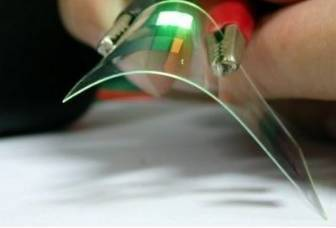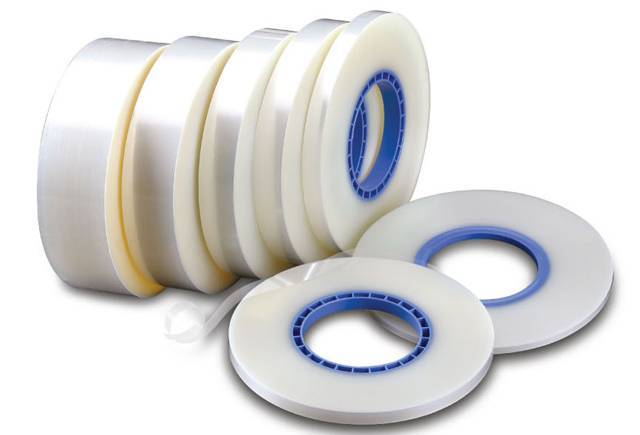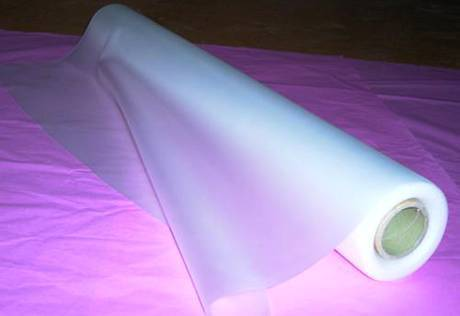Three minutes to understand the types of high barrier film and its use.
2024-09-25
Question: Three minutes to understand the types of high barrier film and its use.
Recently, with the continuous fermentation of OLED display, OLED materials are on fire, and high barrier films have become the object of pursuit by the capital community.
So what is a high barrier film? This article for you to decrypt the high barrier film on the tuyere.
"High barrier" is undoubtedly a very desirable property, which is one of the characteristics required by many polymer packaging materials. In the technical term, high barrier refers to the very low permeability of low molecular weight chemicals, such as gases and organic compounds.
High barrier packaging materials can effectively maintain the original performance of the product and extend the product life.
At present, the commonly used barrier materials in polymer materials are mainly the following:
1. Polyvinylidene chloride (PVDC)
PVDC has excellent barrier properties to oxygen and water vapor.
PVDC's high crystallization, high density and the existence of hydrophobic base make its oxygen permeability and water permeability is very low, so that PVDC has excellent gas barrier property, compared with other materials can better extend the shelf life of packaging items, coupled with its printing adaptability, easy to heat seal, so it is widely used in the field of food and drug packaging.
2. Ethylene-vinyl alcohol Copolymer (EVOH)
EVOH is a copolymer of ethylene and vinyl alcohol, which has very good barrier properties. This is because the molecular chain of EVOH contains hydroxyl groups, and the hydroxyl groups on the molecular chain are easy to form hydrogen bonds, so that the intermolecular force is strengthened, the molecular chain is packed closer, and the crystallinity of EVOH is higher, so that it has excellent barrier properties.
However, the structure of EVOH contains a large number of hydrophilic hydroxyl groups, which makes EVOH easy to absorb moisture, thus greatly reducing the barrier property. In addition, the intramolecular and intermolecular cohesion and high crystallinity lead to poor heat sealing performance.
3. Polyamide (PA)
In general, nylon gas resistance is good, but the barrier to water vapor is poor, water absorption is strong, and with the increase of water absorption and swelling, so that the gas resistance and moisture resistance are sharply reduced, and the stability of its strength and packaging size will also be affected.
In addition, nylon has excellent mechanical properties, strong and wear-resistant, good cold and heat resistance, good chemical stability, easy processing, good printability, but poor heat sealing.
PA resin has certain barrier characteristics, but the moisture absorption rate is large, which affects its barrier property, so it can not generally be used as an outer layer.
4. Polyester (PET, PEN)
The most common and widely used barrier material in polyester is PET. PET has excellent barrier properties due to its symmetrical chemical structure, good molecular chain planarity, tight molecular chain stacking, and easy crystallization orientation.
In recent years, the rapid development of the application of PEN, it has good hydrolysis resistance, chemical resistance and UV resistance. The structure of PEN is similar to PET, except that PET contains a benzene ring in the main chain, while PEN contains a naphthalene ring in the main chain.
Because naphthalene has greater conjugation effect than benzene ring, the molecular chain is more rigid, and the structure is more planar, PEN has better comprehensive properties than PET.
1. Multi-layer compound
Multilayer composite refers to the composite of two or several films with different barrier properties through a certain process. In this way, the permeable molecules have to pass through several layers of film to reach the inside of the package, which is equivalent to extending the permeable path, so that the barrier performance is improved.
The method is a kind of composite film with excellent comprehensive properties prepared by synthesizing the advantages of various films, and the process is simple.
However, compared with the intrinsic high barrier material, the film prepared by this method is thicker, prone to bubbles or cracking and folding, which affect the barrier performance, and the equipment requirements are relatively complex and the cost is high.
2. Surface coating
Surface coating is the use of physical meteorological deposition (PVD), chemical vapor deposition (CVD), atomic layer deposition (ALD), molecular layer deposition (MLD), layer self-assembly (LBL) or magnetron sputtering deposition technology on the surface of the polymer metal oxide or nitride and other materials, so as to form a dense and excellent barrier coating on the surface of the film.
However, these methods have some problems such as time-consuming process, expensive equipment and complicated process, and the coating may produce defects such as pinholes and cracks during service.
3. Nano-composite materials
Nanocomposites are prepared by intercalation, in situ polymerization or sol-gel method using impenetrable sheet nanoparticles with large aspect ratio. The addition of sheet nanoparticles can not only reduce the volume fraction of polymer matrix in the system to reduce the solubility of permeable molecules, but also extend the permeable path of permeable molecules and reduce the diffusion rate of permeable molecules, so that the barrier performance is improved.
4. Surface modification
Because the polymer surface is often in contact with the external environment, it is easy to affect the surface adsorption, barrier property and printing of the polymer.
In order to make the polymer can be better used in daily life, the surface of the polymer is usually treated. It mainly includes: surface chemical treatment, surface grafting modification and plasma surface treatment.
This kind of method is easy to meet the technical requirements, the equipment is simple, the one-time investment cost is low, but it can not achieve the long-term stability effect, once the surface is damaged, the barrier performance will be seriously affected.
5. Two-way stretch
By bidirectional stretching, the polymer film can be oriented in both vertical and horizontal directions, improve the order of molecular chain arrangement, pile more tightly, so that small molecules are more difficult to pass through, and then improve the barrier performance. This method complicates the preparation process of the intrinsic high barrier polymer film, and the barrier performance is difficult to be significantly improved.
| Application of high barrier materials
High barrier film has already appeared in daily life, the current polymer high barrier materials are mainly used in food and drug packaging, electronic device packaging, solar cell packaging, OLED packaging.

1. Food and drug packaging
Food and drug packaging is the most widely used field of high barrier materials. It is mainly to prevent oxygen and water vapor in the air from entering the package to spoil food and medicine, which greatly reduces its shelf life.
For food and drug packaging, the barrier requirements are generally not particularly high, and the water vapor transmittance (WVTR) and oxygen transmittance (OTR) of the material to be blocked should be less than 10g/m2/day and 100cm3/m2/day, respectively.

2. Electronic device packaging
With the rapid development of modern electronic information, people have put forward higher requirements for electronic components, and have developed towards portability and multi-function. This puts forward higher requirements for electronic device packaging materials, which should have good insulation, but also be able to protect it from external oxygen and water vapor corrosion, and also have a certain strength, which requires the use of polymer barrier materials.
General electronic devices for packaging material barrier requirements for water vapor transmittance (WVTR) and oxygen transmittance (OTR) to be less than 10-1g/m2/day and 1cm3/m2/day, respectively.
3. Solar cell packaging
Because the solar energy is exposed to the air all the year round, the oxygen and water vapor in the air are easy to corrode the metallized layer outside the solar cell, which seriously affects the use of solar cells. Therefore, it is necessary to package the solar cell module with high barrier materials, which can not only ensure the service life of the solar cell, but also enhance the resistance of the battery.
The barrier requirements of solar cells for packaging materials are water vapor transmittance (WVTR) and oxygen transmittance (OTR) to be lower than 10-2g/m2/day and 10-1cm3/m2/day, respectively.

4.OLED packaging
OLED packaging film
OLED from the early stage of development has been placed on the task of the next generation of displays, but the short life has been a major problem restricting its commercial application, the main reason for affecting the life of OLED electrode materials and luminous materials are very sensitive to oxygen, water, impurities, it is easy to be polluted, resulting in a decline in device performance, thereby reducing the luminous efficiency, shorten the service life.
In order to ensure the luminous efficiency of the product and extend its service life, the device must be isolated from oxygen and water during packaging.
And in order to ensure that the service life of the flexible OLED display is greater than 10000h, the water vapor transmittance (WVTR) and oxygen transmittance (OTR) of the blocking material must be less than 10-6g/m2/day and 10-5cm3/m2/day, respectively. Its standards are much higher than the requirements for barrier performance in the fields of organic photovoltaic, solar cell packaging, food, medicine and electronic device packaging technology, so it is necessary to choose flexible substrate materials with excellent barrier performance to package the device in order to meet the strict requirements of product life.
-
2024-10-10
-
2024-10-09
-
2024-10-08
-
2024-09-30
